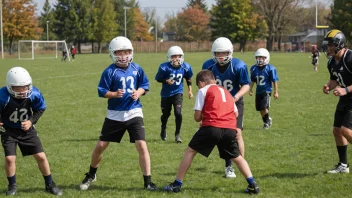Endurance is a crucial component for athletes participating in long-distance water sports events. Whether you're paddling through the waves in a kayak, racing against the clock in a triathlon, or gliding across the water in a rowing shell, the ability to sustain effort over extended periods can make all the difference in performance. However, building endurance is not just about pushing your physical limits; it also involves strategic training, proper nutrition, and the right mental approach. This article explores effective methods for developing endurance specifically tailored for long-distance water sports, ensuring that you can compete at your best while minimizing the risk of injury.
Understanding Endurance in Water Sports
Endurance in water sports encompasses both aerobic and anaerobic capacity. Aerobic endurance is critical for events that last longer than a few minutes, as it allows your body to utilize oxygen efficiently to sustain prolonged activity. In contrast, anaerobic endurance comes into play during high-intensity bursts. Depending on the sport, striking a balance between these two forms of endurance can enhance overall performance.
The Role of Training
Training is the backbone of building endurance. To develop a solid foundation, consider incorporating the following elements into your routine:
- Long, Steady Sessions: Gradually increasing the duration of your workouts is essential. Aim for sessions that challenge your current endurance levels without causing burnout.
- Interval Training: Short bursts of high-intensity effort followed by recovery periods can improve both aerobic and anaerobic capacity. For example, alternating between sprinting and steady paddling can mimic race conditions.
- Cross-Training: Engaging in other forms of exercise, such as running, swimming, or cycling, can enhance overall fitness and reduce the risk of overuse injuries.
- Strength Training: Incorporating strength exercises, particularly for your core and upper body, can improve your power output and efficiency in the water.
Nutrition for Endurance
What you consume plays a significant role in your endurance levels. Proper nutrition fuels your body, aids recovery, and optimizes performance. Here are some guidelines:
- Hydration: Staying well-hydrated is crucial, especially in long-distance events. Dehydration can severely impact your performance. Drink water regularly and consider electrolyte-rich beverages during extended sessions.
- Carbohydrate Loading: Carbs are your primary energy source. In the days leading up to an event, increase your carbohydrate intake to ensure your glycogen stores are maximized.
- Protein for Recovery: Post-workout, consume a meal rich in protein to repair muscle tissues and promote recovery.
- Healthy Fats: Incorporate sources of healthy fats, like avocados and nuts, to support overall energy needs and brain function.
Mental Techniques for Endurance
Physical preparation is essential, but mental fortitude is equally important in endurance sports. Here are some techniques to enhance your mental resilience:
- Visualization: Imagine yourself successfully completing the event. Visualization can help prepare you mentally and reduce anxiety.
- Mindfulness and Focus: Practicing mindfulness can help you stay present during your training and events, allowing you to tune into your body and recognize when to push harder or ease up.
- Setting Goals: Break your training into manageable goals. Celebrating small achievements can keep you motivated and focused.
Utilizing Technology for Improvement
In today’s digital age, technology can play a pivotal role in your training. Here are some tools to consider:
- Wearable Fitness Trackers: Devices that monitor heart rate, distance, and calories burned can provide valuable feedback on your training intensity and recovery.
- Apps for Training Plans: There are numerous apps available that can help you structure your workouts, track progress, and even connect with other athletes for motivation.
- Video Analysis: Recording your technique and analyzing it can help identify areas for improvement, whether it's your stroke, posture, or overall efficiency in the water.
Incorporating Recovery into Your Routine
Recovery is an often-overlooked aspect of training that is crucial for building endurance. Without adequate recovery, your body cannot repair itself, leading to fatigue and potential injury. Here are some recovery strategies:
- Active Recovery: Engage in low-intensity activities on rest days to promote blood flow and recovery.
- Stretching and Mobility Work: Incorporate regular stretching sessions to maintain flexibility and prevent tightness in your muscles.
- Rest Days: Schedule regular rest days to allow your body to recuperate fully.
Conclusion
Building endurance for long-distance water sports events is a multifaceted process that requires a combination of physical training, nutritional support, mental strategies, and recovery practices. By incorporating various training methods, paying attention to your nutrition, utilizing technology, and prioritizing recovery, you can enhance your endurance and performance in the water. Remember, every athlete’s journey is unique, so listen to your body, adjust your training accordingly, and enjoy the process of becoming a stronger, more resilient athlete.






